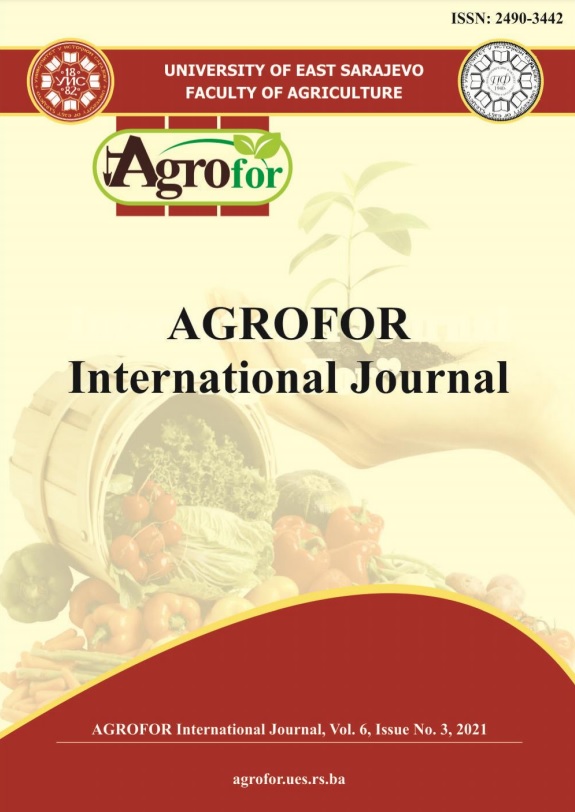TECHNICAL EFFICIENCY OF THE RIPARIAN BEEKEEPERS OF THE COMPLEX OF PROTECTED AREAS PÔ-NAZINGA-SISSILI IN BURKINA FASO
DOI:
https://doi.org/10.7251/AGRENG2103085SAbstract
This paper attempted to analyse determinants of the technical efficiency of beekeepers in villages impacted by the creation of elephant corridor called Corridor No. 1 of the Pô-Nazinga-Sissili protected area complex in southern Burkina Faso. The data used in this analysis were collected from a sample of 52 beekeepers in July and August 2018. A Cobb-Douglas type honey production function with inefficiency effects was estimated for this purpose. The results showed that 75% of the discrepancy between potential and actual honey production would be due to beekeepers' technical inefficiency and that the average score of beekeepers' inefficiency effects was 0.78. It should be noted that the location of the hives, the number of years of beekeeping training received as well as the possession of a beekeeping suit are the significant factors that increase the efficiency level of the beekeepers. On the other hand, membership to a beekeepers’ association has a negative effect on honey production. The results highlight that locating hives within one kilometer of the elephant corridor may significantly improve the
technical efficiency of the beekeepers. However, the survival of these pachyderms is threatened because of human reprisals against them following their possible overflow into the riparian villages. Thus, an effective and sustainable policy aiming at both the conservation of the forest and an improvement of the incomes of the riparian households could be implemented by encouraging beekeepers to locate their hives next to the protected forests. This should increase their yields and it could maintain elephants within forests.
Keywords: Beekeeping, technical efficiency, protected areas, Burkina Faso.

